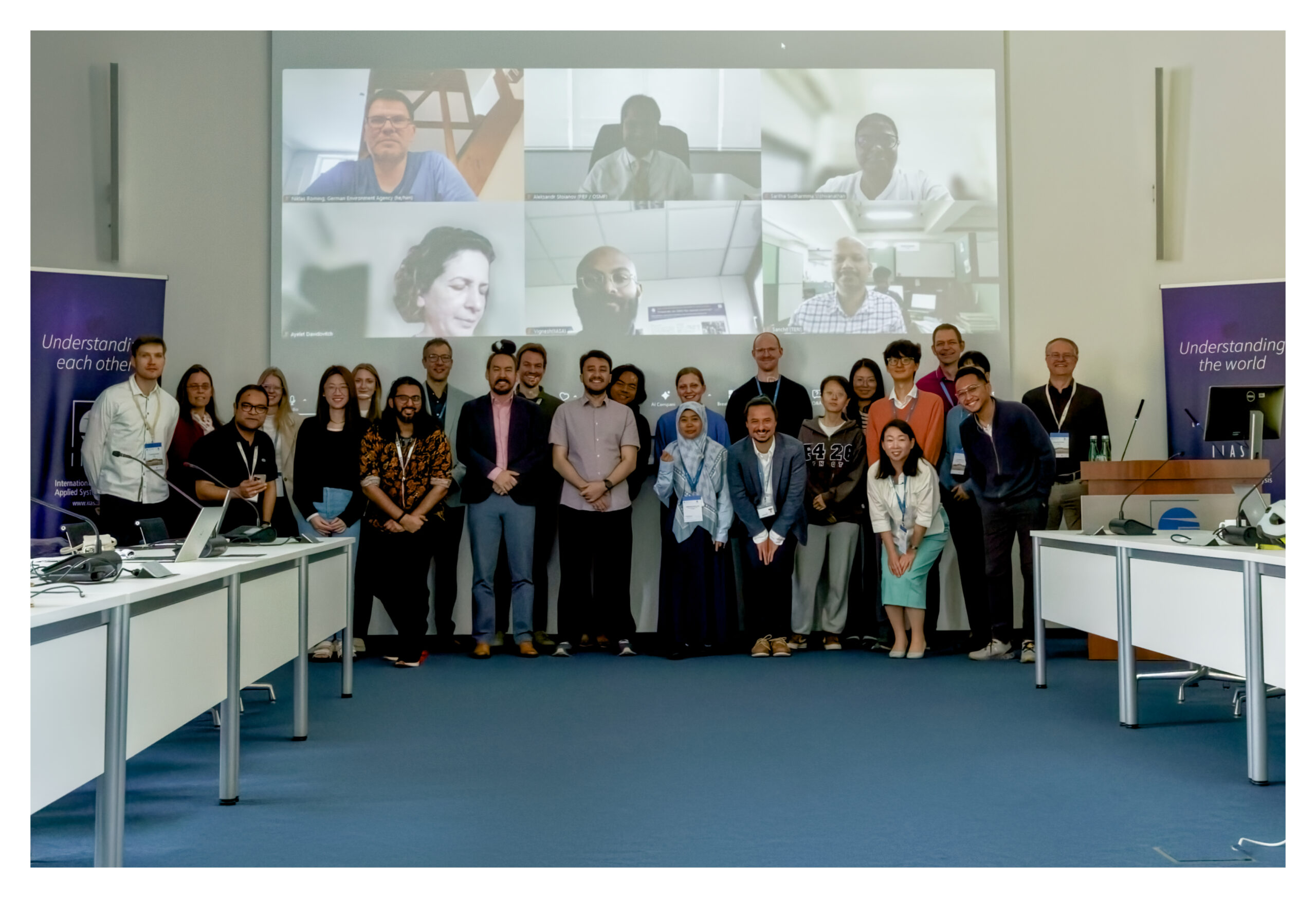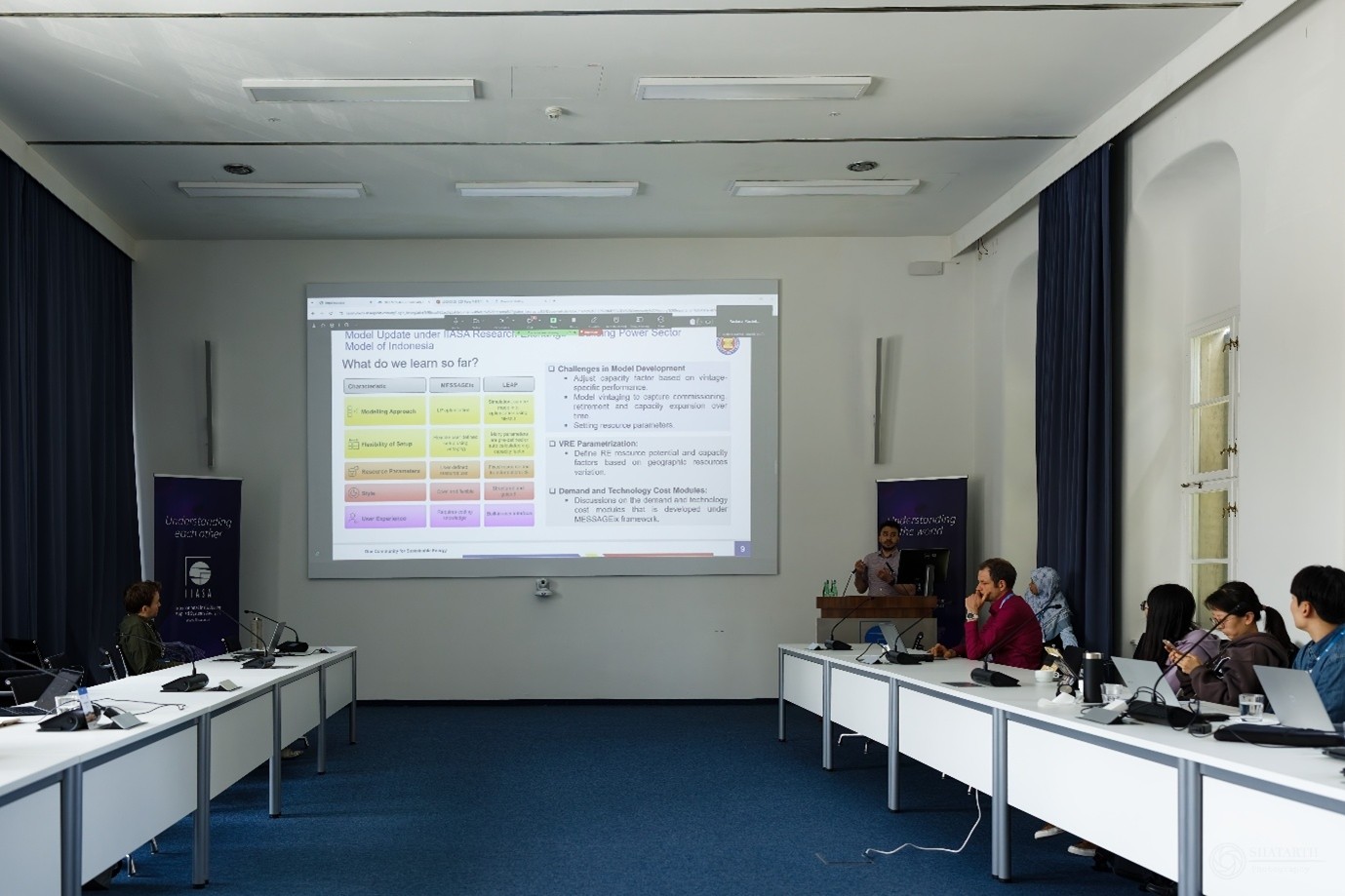Menu

Photo 1. Group photo of the Messageix Community Meeting.
On Tuesday and Wednesday, 20th–21st May 2025, representatives from the ASEAN Centre for Energy (ACE) attended the fourth MESSAGEix Community Meeting hosted by the International Institute for Applied Systems Analysis (IIASA) in Laxenburg, Austria. Organized under IIASA’s Energy, Climate, and Environment (ECE) Program, the event convened global MESSAGEix users—a modelling framework for energy and environmental policy analysis—to share cutting-edge research, national applications, and collaborative tools for sustainable transitions.
MESSAGEix (Model for Energy Supply Strategy Alternatives and their General Environmental Impact) is a leading open-source modelling framework developed by the International Institute for Applied Systems Analysis (IIASA). It helps governments and institutions simulate long-term energy pathways, balancing costs, technologies, and policies to meet climate goals, such as those outlined in the Paris Agreement.

Photo 2. Dr. Ambiyah Abudllah, Senior Researcher of Energy Modelling and Policy Planning (MPP) Department at ACE, presented on ACE and the research component under the COMMITTED project.
In National Model Applications, researchers showcased country-specific applications using the MESSAGEix. Arfa Yaseen (Lahore University of Management Sciences, Pakistan) outlined Pakistan’s net-zero energy transition, while Görkem Güngör (Hacettepe University, Turkey) evaluated Turkey’s cap-and-trade mechanisms for the power sector. Dr. Ayelet Davidovitch (Tel Aviv University, Israel) and Dr. Ruslana Palatnik (IIASA) explored Israel’s energy policy modeling. At the same time, Dr. Ambiyah Abdullah and Muhammad Ilham Rizaldi (ACE) presented the progress of a cost-effective technology roadmap for Indonesia’s climate targets using the MESSAGEix Indonesia prototype model under the COMMITTED-IIASA research exchange.

Photo 3. Muhammad Ilham Rizaldi, Research Analyst of the MPP Department at ACE, presented the framework and progress of model construction using MESSAGE-ix for Indonesia.
The day concluded with MESSAGEix scenario tools, featuring Dr. Siddarth Joshi (IIASA) on data calibration, Dr. Paul Natsuo Kishimoto (IIASA) on model preparation with GENNO, and Lorian Maczek and Luca Casamassima (IIASA) on Sankey diagrams for energy flows. Dr. Muhammad Awais (IIASA) and collaborators also unveiled an open-source provincial model for Canada.
Day 2: Equity, Scenario Tools, and Demand-Side Innovations
Day two prioritized justice and equity in climate action. Dr. Setu Pelz (IIASA) analyzed fair responsibility-sharing for 1.5°C overshoot scenarios, while Dr. Jarmo Kikstra (IIASA) linked energy poverty eradication to climate justice through the Decent Living Energy Project. Dr. Miho Kamei (IGES, Japan) extended this to Bhutan’s vulnerable energy-water systems, proposing nexus-based solutions.
In the scenario tools’ sessions, advanced methodologies were explored. Dr. Yang Ou (Peking University, China) demonstrated the application of deep learning to IPCC-aligned mitigation scenarios, and Dr. Takuya Hara (Toyota, Japan) introduced generalized levelized cost metrics for energy models. Philip Hackstock (IIASA) highlighted the use of automated scenario processing to streamline research.
The open discussion session provided a platform for participants to share their ongoing research and projects. Lukas Eggert (UBA, Germany) explored distributive dynamics within the MESSAGEix-MACRO framework, shedding light on economic and environmental trade-offs. Dr. Behnam Zakeri and Josefine Gruber (WU, Austria, and IIASA) presented their vision for developing a national integrated assessment model for Austria, highlighting its potential applications for policy support. Meanwhile, Dr. Habtamu Demiessie (University of Ibadan, Nigeria) discussed an interdisciplinary approach to modelling barriers and drivers of household-level energy transitions in Ethiopia, emphasizing the socio-technical dimensions of sustainable energy access. These interventions underscored the diverse applications of MESSAGEix in addressing region-specific energy and climate challenges.
The final sessions addressed land use and demand-side modeling. Dr. Yazhen Wu (IIASA) coupled MESSAGEix-GLOBIOM to study land-energy interactions, while Dr. Yoga Pratama (IIASA) examined enhanced weathering/ocean alkalinity for carbon removal. Dr. Verd Blass (IIASA/Tel-Aviv University, Israel) applied life-cycle assessment (LCA) to construction materials, and Dr. Anneke Javaid (IIASA) updated transport sector modelling. André Baumgart (BOKU, Austria) concluded with a call to rethink mobility infrastructure in the Global South using a combined demand- and supply-side approach.

Photo 4. ACE representatives with the IIASA team.
Through participation at this meeting, the ACE team has learned a lot about the update of ongoing models and approaches used in the energy sector to be applied for the improvement of the modelling approach for the upcoming ACE flagship products (such as ASEAN Energy Outlook and others). Furthermore, through this involvement, ACE could also leverage existing networks with the leading international modeling community networks globally to advance the capacity building of ASEAN.
